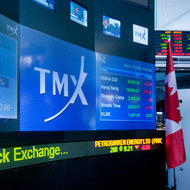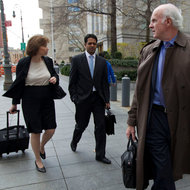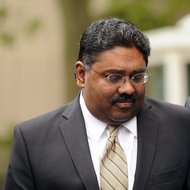 Harry Campbell
Harry Campbell
Facebook is in a corner.
Another Internet hot shot, Groupon, is trading below its offering price, and the market for Internet initial public offerings over all appears to be deflating. The European sovereign debt crisis isn’t helping the market gloom. The coming months are shaping up to be a bad time to undertake an I.P.O.
Still, Facebook will almost certainly have to go public during this time whether it wants to or not — and whether or not it can get a valuation of $100 billion or more in doing so.
Deal Professor
View all posts
And it’s partly Facebook’s fault — it just has too many shareholders.
Securities regulation requires a United States company with 500 or more shareholders of record to begin filing reports, including audited financial information, with the Securities and Exchange Commission four months after the year it exceeds this threshold.
Facebook most likely exceeded 500 shareholders this year. By the end of April 2012, it will become subject to this heightened regulation and have to disclose a spate of confidential business information.
Most start-up technology companies are able to avoid passing this threshold. They finance operations from a handful of investors. The largest ownership group is typically employees who receive options, a group that is exempt from this calculation. In 2008, Facebook switched from awarding options to restricted stock, but the S.E.C. went so far as to give the company a special exemption to permit this.
Facebook appears to have been pushed over the edge by two extraordinary events.
Long-time employees have been exercising their options and selling the shares in large quantities on private markets. Facebook reportedly issued these employees options without any restrictions on resale, except that it has a right to repurchase the shares if employees try to sell. But the company has not always exercised this right, instead allowing these shares to be transferred to new investors, which count toward the 500-person threshold.
And in January, Facebook arranged to sell $1.5 billion in shares through Goldman Sachs to new investors. This offering appears to have pushed it over the line.
Still, Facebook is required only to begin reporting and filing information with the S.E.C. at the end of April. The company is not legally required to go public and list shares at this time, though the S.E.C.’s requirement alone will be a big impetus.
I.P.O.’s are built not only on company fundamentals but on salesmanship. Typically, companies try to go to market off the release of their public information and financial statements to the S.E.C. Drawing back the curtain with an offering allows a company to sell its shares with maximum hype. Companies also conclude that if they are going to be subject to much of the regulation that comes with being public, they might as well just go ahead with an I.P.O. and get the full benefits of being public.
There is precedent for this from a Facebook competitor. In 2004, Google was also forced to begin filing its financial information with the S.E.C, and timed its I.P.O. to coincide with this event.
Facebook will most likely want to do the same.
Even if Facebook could resist, an eager army of Facebook employees is pushing hard for an I.P.O., according to Eric Eldon of TechCrunch. In 2008, Facebook adopted a new restricted stock program that prevented employees from selling their shares until an I.P.O. or a sale, or if Facebook permitted it. Even employees who acquired shares before this time are forbidden from selling shares under the company’s insider trading policy unless Facebook opens a trading window. But this window has remained closed; the last time Facebook allowed employees to sell shares was in 2009.
Facebook is thus facing a choice it may not want to make. It can hold off an offering, risk employee wrath and begin complying with S.E.C. regulations. Alternatively, it can push forward with an offering in a choppy market that may not produce the best result.
It could have prevented this turn of events.
Facebook could have exercised its repurchase right and bought the shares that have flooded the private markets. While it may not have wanted to spend the money to purchase these shares, Facebook could have funneled these shares into friendly hands, like Goldman Sachs. LinkedIn, for example, worked with SharesPost, the private trading market, to ensure that before its offering, its shares were bought on the exchange only by existing investors. Zynga has taken even a stronger stance, refusing to register share trades in some instances.
Facebook also shoved itself over the cliff when it offered shares to Goldman to be sold to third-party investors. A widespread offering of this type was bound to create a stir and regulatory attention. It also probably sent Facebook over the 500-shareholder level.
There are lessons here for entrepreneurs.
From the get-go, companies may want to have stock option plans that prevent sales to third-party investors until an I.P.O. or other liquidation event. This will have the benefit of keeping the company below the 500-shareholder level and will also allow it to control any private market in its shares from springing up. Twitter, LivingSocial and Square have all reportedly required new investors to agree to terms like this.
If there is a villain here, it is not the securities regulations. This month, Senators Pat Toomey, Republican of Pennsylvania, and Tom Carper, Democrat of Delaware, introduced a bill to raise the 500-holder limit to the equally arbitrary number of 2,000. This bill should be called the Facebook bill. But Facebook is an outlier. In the future, Internet companies should be able to manage their shareholder base to avoid surpassing this threshold.
Raising it to 2,000 or another number may be appropriate given that smaller companies have fewer opportunities these days for public offerings and may need to sell to a larger number of people. But it shouldn’t be done because of Facebook, which had all the opportunities in the world to sell shares to a select number of private investors.
Facebook has strong incentives to go public next year. But it may end up with an offering at a less-than-opportune time or a valuation of less than $100 billion. Facebook’s own choices have left it without full room to maneuver.
Steven M. Davidoff, writing as The Deal Professor, is a commentator for DealBook on the world of mergers and acquisitions.
Article source: http://feeds.nytimes.com/click.phdo?i=7d82dd8d8e0f3a90d665b7764798b6ce





